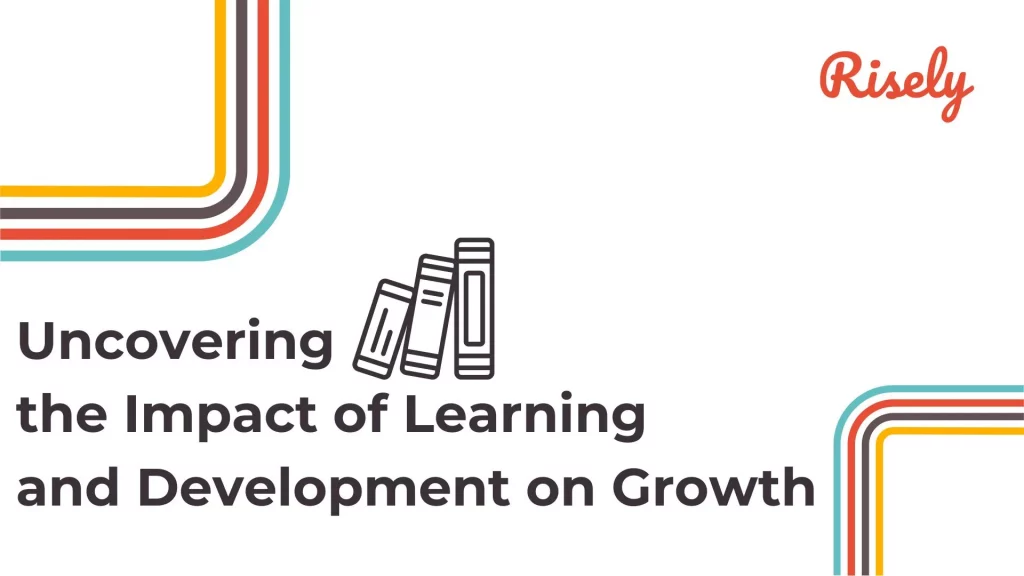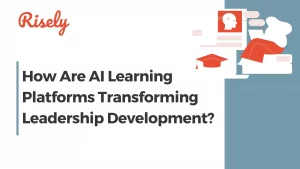Uncovering the Impact of Learning and Development on Growth
Learning and development in today’s dynamic workplaces are no longer nice-to-haves but drivers of true growth, innovation, and employee engagement. As an L&D team leader, you know investing in your people is one of the smartest moves you can make. But learning and development does so much more than just impart new skills. It’s about fostering a culture where continuous growth becomes second nature, where employees feel empowered, and where the organization can consistently adapt to new challenges. When done right, L&D can change not only careers but the very course of your organization. Let’s explore why the importance of learning and development should be front and center in your strategy and how you can harness its full potential.What is Learning and Development?
Learning and development is an HR strategy that contributes directly to professional growth by building the skills of your employees, extending their knowledge, and enhancing overall competency. According to a LinkedIn Learning Report, 94% of employees would stay longer at a company that invests in their career development. Offering L&D programs not only helps employees grow but also aligns with business goals by ensuring your workforce can adapt to market changes and consistently perform at their best. Good L&D programs have clear, measurable objectives that make sense in the broader goals of the company. For example, according to LinkedIn’s Workplace Learning Report, organizations offering personalized learning experiences can boost employee productivity by as much as 32%. This could include closing skill gaps, emerging industry trends in learning and development, or particular organizational needs. By establishing quantifiable objectives, such as increasing productivity or onboarding time, organizations can monitor their progress, find the real value of their programs, and ensure that their L&D initiatives deliver measurable results.Why Does the Impact of Learning and Development Matter?
The impact of learning and development extends well beyond individual growth—it’s a key factor in shaping your company’s culture, driving productivity, and ensuring long-term competitiveness. Employees with the right skills are more engaged and motivated and are willing to commit themselves to the goals set forth by the company. As an L&D professional, you have the power to influence these outcomes. But to secure buy-in from the C-suite, your case needs to be backed by clear, measurable results. Here’s why the impact of L&D matters and how you can make it resonate with your leadership team:- Increase Engagement and Retention: Effective L&D programs help employees feel valued and supported in their growth. This feeling of investment results in higher retention and lower turnover, which means direct reduction in expenses spent on recruitments and training costs is accomplished. It will lead to an increasingly engaged workforce where employees are more interested in their role and the success of the company.
- Increase Productivity: When employees receive relevant, targeted training, they can apply their new skills to their jobs right away. The result of such focused training is efficiency in every sphere and a measurable productivity gain. Provide metrics that show how your L&D initiatives have enhanced team performance and overall output.
- Build a Culture of Continuous Learning: Your L&D initiatives would prepare a culture that emphasizes continuous learning. Such adaptability will ensure that your team can easily change to meet market fluctuations or changes in technology. A strong learning culture isn’t just a nice-to-have; it’s a strategic advantage that prepares the organization for long-term success.
- Attract and Retain Top Talent: In a competitive job market, companies that prioritize learning and development stand out as desirable employers. By offering good growth prospects and providing development programs, skilled candidates, who want to invest in their careers, are more likely to be attracted to your company. Emphasize how your L&D programs make the company an attractive place where top talent is given the scope to thrive.
What is the Importance of Learning and Development in the Workplace?
Learning and development equips your team for the road ahead; therefore, a solid L&D strategy is critical. By giving employees the skills to adapt to changes in the industry, it makes sure your company stays competitive while fostering long-term success. The leading learning culture increases engagement, reduces burnout, and helps drive better performance. Workers will be much more motivated and committed to the company’s goals once they see opportunities for growth. L&D also makes your team agile because it focuses on your current and future skills. Additionally, leadership development is very crucial in directing your teams towards common goals. This investment in L&D creates a skilled productive workforce and is a strategic move toward the future of your company.The Direct Link Between L&D and Employee Engagement
A good L&D strategy can make a world of difference when it comes to employee engagement. When you invest in your team’s growth and give them opportunities to learn new skills, it sends a clear message: “We value you.” That kind of support makes employees feel appreciated, which naturally leads to them being more engaged and committed to the organization’s goals. But it’s not just about offering training—it’s about creating a positive learning experience. When your L&D programs are engaging, with interactive content, fun activities, and personalized learning paths, employees become more excited about their own development. On top of that, providing ongoing support and opportunities to apply their new skills ensures that employees can actually use what they’ve learned on the job. This way, your team feels empowered to grow, and your company benefits from a more engaged, skilled workforce.What is the Role of Learning and Development in Attracting Top Talent?
Learning and development plays a key role in attracting top talent. Job seekers aren’t just looking for a paycheck—they want to grow, and they’re drawn to companies that invest in their development and offer opportunities to build new skills. When your organization offers good L&D programs, you stand out as a great place to work. It shows that you genuinely care about helping your employees grow. By fostering a culture of continuous learning, you not only attract motivated individuals but also keep them engaged. These employees are eager to improve their careers while contributing to the company’s success.How do Effective L&D Strategies Make Companies More Attractive?
To attract top talent, your company needs to showcase a strong learning and development (L&D) strategy that shows you truly care about employee growth. Here’s how L&D can make your organization more appealing to potential hires:- Clear Career Paths: When you provide clear career growth opportunities, potential employees can easily see how they’ll advance within your company with the support of L&D. It gives them a vision of their future with you.
- Personalized Development Plans: Offering personalized development strategies tailored to each employee’s goals shows that you’re invested in their individual growth. It allows them to pursue what they’re truly passionate about.
- Investment in Emerging Technologies: By training your team on the latest technologies and industry trends, you signal that your company is always ahead of the curve. This not only excites potential hires but also gives them valuable skills for their careers.
The Connection Between Learning Opportunities and Employee Retention Rates
Creating a strong learning culture is essential for keeping your employees engaged and loyal. When people feel like they can grow and develop their careers within your organization, they feel valued—and that directly leads to better retention. Offering opportunities for skill-building, whether through training programs, workshops, mentoring, or new projects, shows your team that you’re invested in their future. It’s more than just a job to them—it becomes a place where they see real career growth. A culture that truly supports continuous learning helps employees feel connected and committed. When they know they’re backed in their personal and professional growth, they’re more likely to view your company as a place where they can build a long-term career, rather than just a temporary stop.Measuring the Impact of Learning and Development
Measuring the impact of training is crucial because it highlights the ROI of your learning and development (L&D) programs, which can help secure more funding for employee growth. When you track the right metrics, you get a clear picture of how effective your L&D efforts are and can make informed decisions to improve them. Key metrics to consider include employee engagement, knowledge retention, how well employees apply new skills on the job, time it takes to become proficient in new tasks, and the impact on business outcomes like increased sales, better customer satisfaction, or reduced costs. These insights show the real value of L&D, helping you refine your programs and demonstrate their long-term impact.Key Performance Indicators (KPIs) for L&D Success
In measuring how well learning and development programs work, key performance indicators (KPIs) are very important.- Knowledge Retention Rates: Tracking how much information employees retain after training helps gauge the effectiveness of your L&D programs and how well your team is absorbing new skills.
- Employee Productivity: Measuring productivity after training shows how well employees are applying what they’ve learned, helping you see the direct impact on their performance.
- Closing Skills Gaps: By assessing how well training programs are addressing existing skills gaps, you can ensure your workforce is better equipped to handle new challenges and responsibilities.
- Impact on Employee Engagement and Satisfaction: When employees feel supported in their growth, they’re more engaged and satisfied, which naturally boosts their performance. Tracking these metrics shows how L&D contributes to a more motivated team.
- Overall Performance: Monitoring how training affects business outcomes, like increased sales, improved customer satisfaction, or lower costs, gives a clear view of the broader impact of your L&D efforts.
Calculating the Return on Investment (ROI) in Learning and Development
Measuring the Return on Investment (ROI) in Learning and Development is all about understanding the value your training programs bring to your organization. Essentially, it’s a way to see how much benefit you get from every dollar you invest in employee development. By comparing the financial gains, like increased productivity or higher sales, to the costs of running the program, you can see whether your efforts are paying off. The formula is simple but the insights it gives are invaluable. It helps you make smart decisions about where to focus your L&D efforts and ensures that every investment counts.ROI (%) = (Net Benefits of Training / Cost of Training) x 100
To get the most accurate results, start by clearly defining what success looks like for your training. Don’t forget to capture both the immediate wins and the longer-term impact. Once you’ve measured the ROI of your L&D programs, the next step is showcasing the results effectively. Presenting your data in a clear, actionable way, using visuals like graphs or charts to highlight improvements in areas like productivity, sales, or employee retention is essential. Connect these outcomes directly to business goals, emphasizing how L&D initiatives are driving measurable growth. By tying ROI to tangible business impact, you not only justify the investment but also strengthen the case for future L&D programs as essential drivers of success.Conclusion
Learning and Development (L&D) programs are important for the growth and success of a company. They help increase employee engagement, improve retention, and attract top talent. When companies invest in strong L&D strategies, they can boost their competitiveness and overall performance. It’s vital to keep reviewing and updating these programs to stay current and get the best results. The benefits of L&D include better skills, higher productivity, and more job satisfaction. The effect of L&D on a company’s success is significant. Use the power of ongoing learning to drive new ideas, develop talent, and help your organization grow in a sustainable way.Avantika holds an undergrad degree in Political Science and Psychology, bringing a unique blend of analytical and psychological insight to her writing. With extensive experience in content creation and research, she crafts engaging and well-informed content that resonates with readers and drives meaningful conversations.
Free Learning and Development Strategy Template
A complete framework by Risely to evaluate and re-energize your organization’s growth.
How to Build a Leadership Journey? ft. Thomas Ulbrich
Effective leadership doesn’t always begin with a grand vision. Sometimes, it takes root in the courage to take the first…
AI and Leadership Development: Driving Synergy for Growth
Sneha MishraApr 14, 2025
AI and Leadership Development: Driving Synergy for Growth You know the frustration all too well. Your organization invests thousands in…
How Are AI Learning Platforms Transforming Leadership Development?
Sneha MishraApr 8, 2025
As an L&D leader, you’re likely familiar with this frustrating reality: 82% of organizations consider leadership development critical(1), yet only…
5 Essential AI Skills for L&D Leaders
Sneha MishraMar 31, 2025
5 Essential AI Skills for L&D Leaders According to LinkedIn’s 2025 Workplace Learning Report(1), 71% of L&D professionals are now…
How to Create a Course with AI: A Guide for L&D Professionals
Sneha MishraMar 20, 2025
How to Create a Course with AI: A Guide for L&D Professionals According to a McKinsey survey(1), only 11% of…







